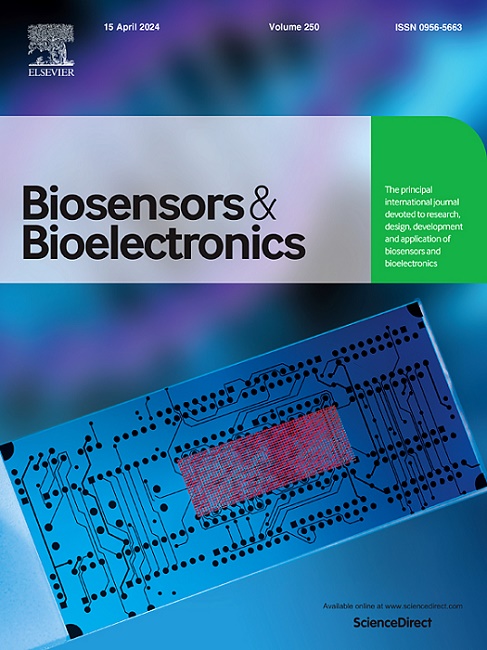Upconversion nanoparticle-based optical biosensor for early diagnosis of stroke
IF 10.7
1区 生物学
Q1 BIOPHYSICS
引用次数: 0
Abstract
Over 17 million people experience a stroke episode annually, with 5.9 million deaths. Stroke is diagnosed by physical tests and neuroimaging which need to be performed quickly to determine if the stroke is caused by ischaemia or haemorrhage. Neuroimaging can reliably confirm bleeding, but many patients with suspected ischaemic stroke (up to 40%) are subsequently confirmed to have alternative pathologies e.g., migraine or seizures (stroke mimics) delaying the transfer of stroke patients to an acute stroke unit for early intervention and treatment. Thus, a simple complimentary blood biomarker test to differentiate stroke patients from non-stroke patients with similar clinical symptoms is essential in prehospital and emergency settings for efficient stroke management and prompt treatment. The current 'Gold Standard' technique for detecting protein biomarkers is complex, time-consuming, and requires automated equipment. In this study, we have developed a proof-of-concept of lanthanide-doped upconversion nanoparticle (UCNP)-based optical biosensor platform for detecting glial fibrillary acidic protein (GFAP), a potential stroke biomarker, in human blood serum. The results show a linear response in photoluminescence quenching of UCNP conjugated GFAP antibody with the increasing concentration of GFAP biomarker in human blood serum. This approach can be used in the ambulance and Emergency Department to quickly diagnose a stroke. In the longer term, such techniques can be integrated into a self-assessment kit to monitor those patients who are at risk after strokes.
求助全文
约1分钟内获得全文
求助全文
来源期刊

Biosensors and Bioelectronics
工程技术-电化学
CiteScore
20.80
自引率
7.10%
发文量
1006
审稿时长
29 days
期刊介绍:
Biosensors & Bioelectronics, along with its open access companion journal Biosensors & Bioelectronics: X, is the leading international publication in the field of biosensors and bioelectronics. It covers research, design, development, and application of biosensors, which are analytical devices incorporating biological materials with physicochemical transducers. These devices, including sensors, DNA chips, electronic noses, and lab-on-a-chip, produce digital signals proportional to specific analytes. Examples include immunosensors and enzyme-based biosensors, applied in various fields such as medicine, environmental monitoring, and food industry. The journal also focuses on molecular and supramolecular structures for enhancing device performance.
 求助内容:
求助内容: 应助结果提醒方式:
应助结果提醒方式:


